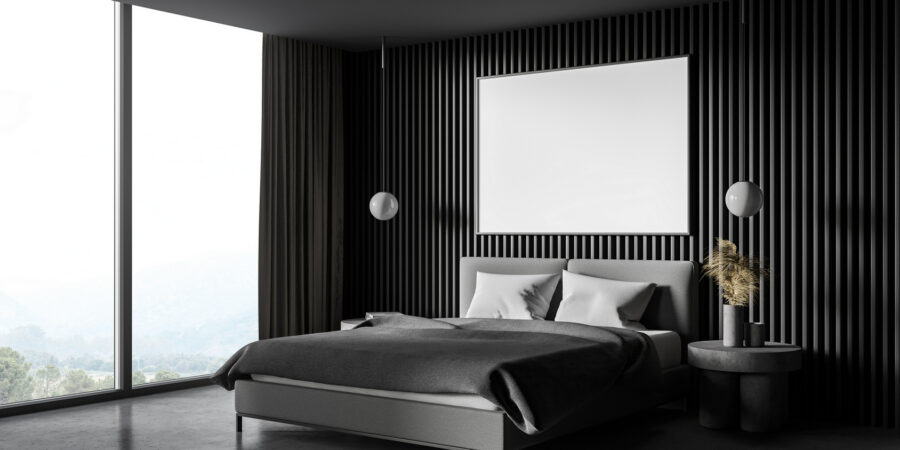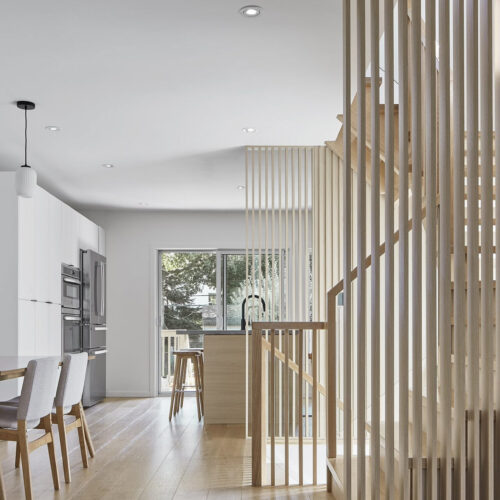Looking for an effective solution to soundproof the walls in your apartment block? Are you fed up with the kids upstairs or the neighbour’s TV being too loud? Do you want to fall asleep in silence and not know when your neighbour takes a shower?
Below are some ideas on how to soundproof a room in a block of flats and finally feel comfortable in your home. Should it be functional or aesthetic? Some solutions don’t require compromise. Read on to explore our suggestions.
Read also
Soundproofing or acoustic treatment – what’s the difference?
Both terms make up the generic term for soundproofing a home. However, they should not be used interchangeably, as they address different acoustic comfort issues in the home. It is worth knowing the difference – it will determine the solutions with the desired effect.
Soundproofing is the way to go if you are disturbed by outside noise, such as neighbours talking or traffic. This involves sound insulation and is mainly dependent on the construction of the building itself, such as the thickness of the walls. Importantly finding a way to soundproof the walls in your flat will work both ways – the noise coming from your flat will not disturb others.
Acoustic treatment works well where echoes are created during conversations or when listening to music. This requires adapting the acoustics of the space to minimise sound propagation.
Are you furnishing your home and want a comfortable place to relax after a hard day’s work? Consider both soundproofing and acoustic treatment for your four walls to enhance your living space.
Remember!
Acoustic insulation prevents sound from penetrating the walls (works both ways). Acoustic treatment pertains to managing sound reflections within a room.
How to soundproof your flat in a block of flats?
There are several effective options.Specialised acoustic materials, i.e.,foams, mats, panels and boards? Changes made during renovations or simply selecting the right accessories? Explore the benefits of each solution and choose what suits you best.
Let’s start with our favourite solution, which combines practicality, aesthetics, and the latest interior design trends.
Acoustic Slats Mounted on Felt
Are you furnishing your flat with a modern and cosy touch? Are you looking to ensure the functionality of your rooms and are wondering how to soundproof your flat’s walls before you realise that the reverberation makes it difficult to talk and listen to music? Choose acoustic slats – surprise your guests with an original addition while ensuring daily comfort.
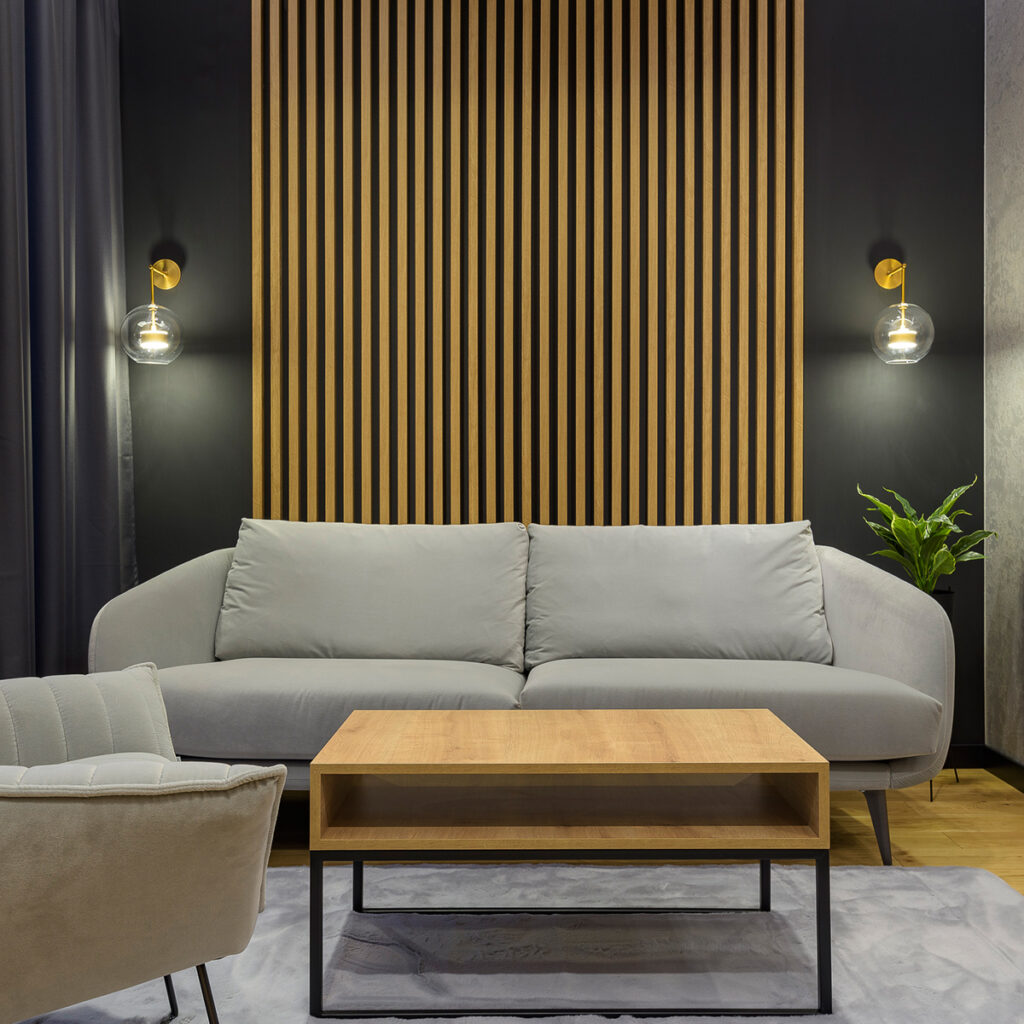
MDF slats mounted on felt offer an unconventional solution for improving acoustics in the home. Beyond their elegant decorative appeal that adds character to your rooms, they work exceptionally well as acoustic adapters, reducing unpleasant echoes.
How are such slats constructed? The standard version is a panel construction comprising 6 16mm thick MDF strips glued to black felt every 2cm. While aesthetics remains the primary advantage, many appreciate the flexibility of this solution. You can install them horizontally or vertically, even on the ceiling, and choose from various colours.
Are you a wood enthusiast interested in slats but prefer something smaller? Choose 3D panels on square-shaped felt with similar acoustic properties.
Additional Advantages of Acoustic Slats:
- non-invasive installation using glue or tape,
- long-lasting use due to durable laminates (laminate or natural oak veneer),
- can visually enlarge the room depending on their placement.
Acoustic foams and mats
Acoustic foams are made from unique sound-absorbing materials such as polyurethane or thermoset melamine resin. What about their effectiveness? Acoustic foams are commonly used in conference rooms, offices, or recording studios, and they’ll work wonders in improving the acoustics within your rooms as well.
Manufacturers offer various sizes and thicknesses of acoustic foams, allowing you to choose ones that suit your household’s individual needs, and the unpleasant acoustics in the block will no longer interfere with your rest.
Looking for a solution with a wide range of colours and forms? The choice of foam will be a hit – from classic greys and beiges to energetic yellows and reds. Opting for foams is an excellent choice. From classic greys and beiges to vibrant yellows and reds, you can also select shapes like pyramids, hexagons, gearwheels, or Lego-like blocks.
For those short on ideas or time to create a complete arrangement using individual foams, acoustic mats (larger foams usually sold in rolls) are a practical alternative.
Other benefits of acoustic foams:
- DIY installation using special glue, dowels or self-adhesive tape,
- versatile colours and textures make them ideal as original decorative elements,
- thin profile ensures they don’t reduce usable space or visually shrink the room.
Important!
Are you considering acoustic foam or panels? As well as acoustic properties and appearance, consider heat resistance. Check the necessary approvals before you buy.
Acoustic panels
Do you want a more aesthetically pleasing solution? Want more flexibility in how you use your space? Choose acoustic panels to reduce reverberation in your home and create attractive visual compositions.
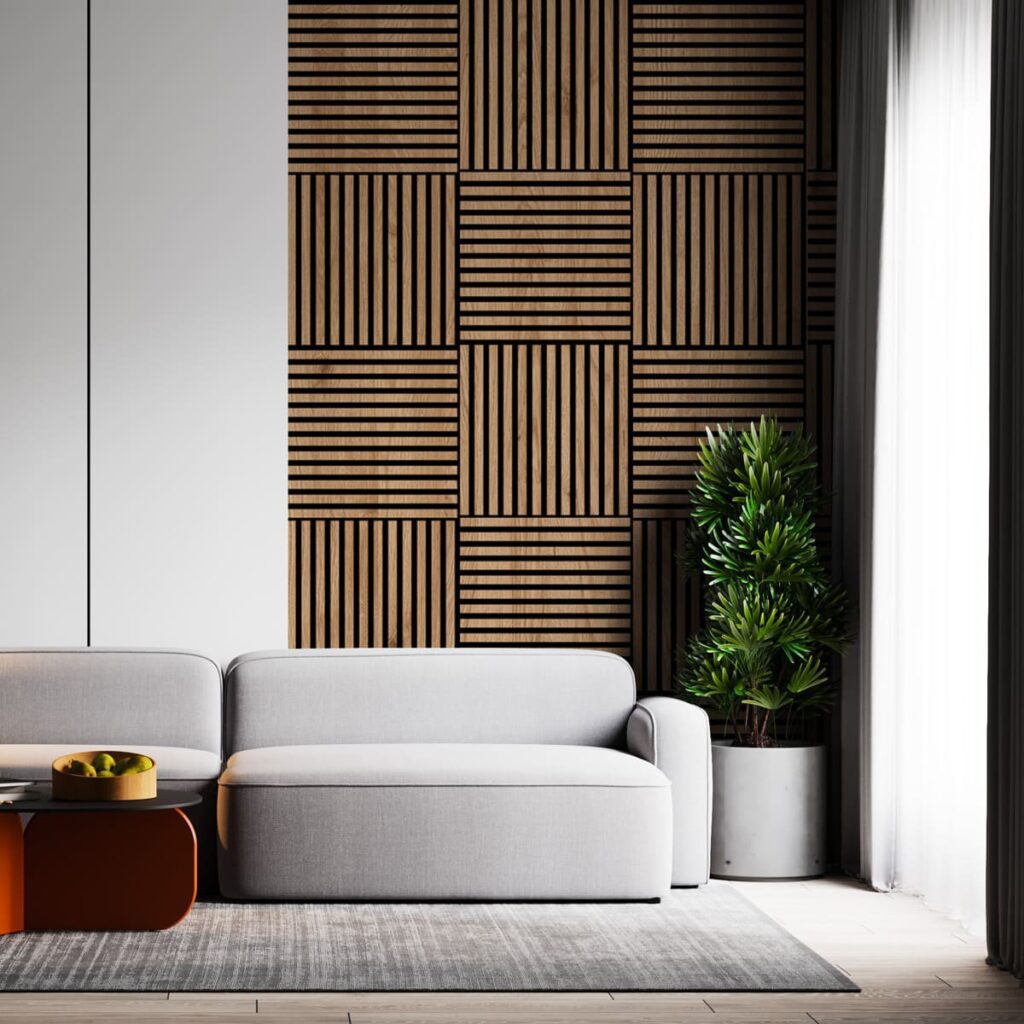
How does this solution differ from the previous one? The idea and often the sound-absorbing materials remain unchanged. You will notice the differences in the construction. Standard acoustic panels consist of the following:
- frame (e.g., wooden or aluminium profile),
- infill (made from acoustic technical foams, mineral or rock wool),
- outer fabric (often with absorbent properties) and padding on the back.
In most cases, you are free to choose the size, the thickness of the charge and even the method of installation (wall or ceiling).
So what should you pay attention to? Ensure that the decorative coating of the selected panels is durable, easy to maintain and clean. Ideally, it should be anti-static (to prevent dust and dust build-up) and non-absorbent.
Other benefits of acoustic panels include
- aesthetic qualities, including the option to order custom acoustic images,
- mounting flexibility, suitable for both walls and ceilings,
- some solutions are easy to dismantle – simply remove the panels and stick the screw marks in the wall (some panels can be mounted on standard brackets, and others can be fixed with glue).
Did you know that…?
Acoustic panels are best installed where sound reflects. By default, this is considered at the householders’ eye level.
During Interior Finishing
Are you getting ready to renovate and looking for a way to soundproof your flat in a block of flats? Or perhaps you’re decorating your interior and want to relax in comfort? This is an excellent time to introduce some practical solutions, including:
Suspended ceiling
Special infills (soundproof rubber mats, acoustic hangers and mineral wool) encased in plasterboard allow you to absorb sound from the floor above.
Acoustic Mats/Soundproofing Mats
Wondering how you can soundproof your flat in a block of flats and not hear your downstairs neighbour’s conversation? You can soundproof the lower floor by placing a special mat under the new panels to absorb unwanted noise. A cork floor will have a similar effect.
Acoustic boards
If you aim to soundproof the walls in a block of flats, choose acoustic boards instead of standard plasterboard. The extra layer of insulation means you hear outside sounds much more quietly.
Sealing Entrance Doors
Living near a lift or staircase and are fed up with the noise from the stairwell? Not planning to invest in a soundproof front door just yet? Make a few minor changes to soundproof your current door, such as installing a metal threshold or a soundproof mat.
Soundproofing your flat with accessories
Looking to soundproof your home to a lesser degree and want quick results? Consider sound-absorbing decorative elements such as soft carpets, thick curtains or plush cushions to ‘absorb’ sounds and prevent noise.
Curtains with acoustic properties are also available on the market. They improve the acoustics inside the room and are also an effective trick for soundproofing an apartment in a block of flats (reducing persistent noise from the street).
The advantages of this solution are its relatively low price and the ease with which it can be re-decorated. However, it won’t work if you have an allergy sufferer in the house who is uncomfortable with more dust.
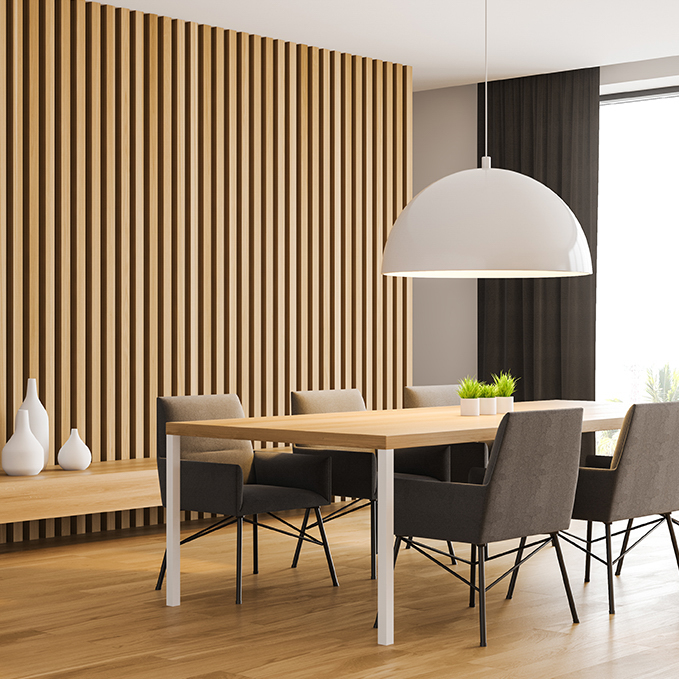
When is it worth soundproofing your home?
Everyone likes to relax in silence and talk or watch their favourite film without annoying reverberations. However, there are a few situations where soundproofing the walls works remarkably well, such as
- if you work remotely, you spend much of your day at home and are disturbed by outside noise,
- if you have neighbours who often party and you need peace and quiet to sleep,
- if you have a young child and do not want to expose your neighbours to the risk of being disturbed by your toddler’s loud cries at night,
- if you live on a busy street.
In summary, there are several ways to soundproof a home effectively. Choosing the right one depends on space, design, budget and taste. One thing is for sure: soundproofing your home (at least by a few decibels) or improving the acoustics in the rooms will take your relaxation to a whole new level.

